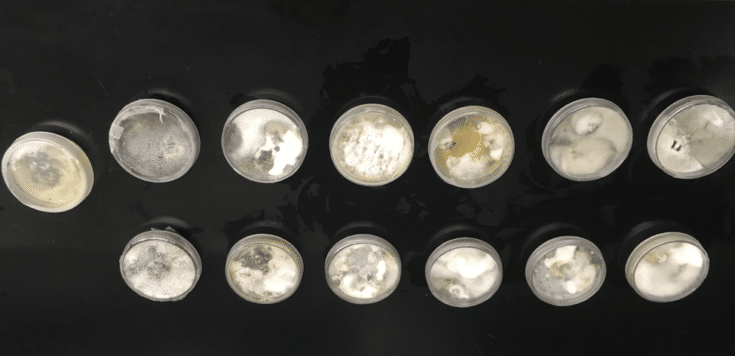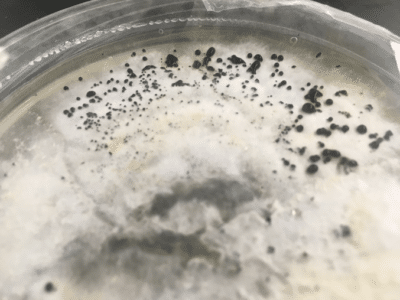By Ryann Rossi
Since I started researching mangrove disease in The Bahamas, I have become really interested in looking at other Caribbean nations to determine if they too have disease present. When I first started talking to Amy Heemsoth, Education Director at the Khaled bin Sultan Living Oceans Foundation about partnering to integrate my research into their Mangrove Education and Restoration Programs, I was really excited to continue my research not only in The Bahamas, but also in Jamaica, where no one has studied mangrove disease.
Thanks to the hard work of Amy and the J.A.M.I.N. participants from William Knibb High School, I was able to receive fungal cultures that they had isolated in Jamaica. This was no easy feat, as we had to obtain special permits for shipping fungal cultures between countries and ensure that the cultures were not contaminated on their journey. Thankfully the cultures arrived at my lab in North Carolina State University on time and with little contamination.
Fungal cultures isolated by students in Jamaica.
I was very excited when the cultures arrived as they were my first set of samples from Jamaica. Upon first glance, I thought that some of the cultures appeared similar to cultures from The Bahamas. However, in order to confirm whether any of the cultures from Jamaica were the same as those I have found in The Bahamas, I needed to keep the cultures growing for a couple of weeks. I grew replicates of each culture so that I could investigate the morphological characters and use pieces of the fungi for DNA extraction and sequencing.
These images depict the product of DNA sequencing: a string of nucleotides (ACGT). I use the string of nucleotides and search online to determine the identity of the sample. This sequence was from one of the Jamaican samples and was identified as a species of Cytospora fungi.
Only one culture from Jamaica was similar to the fungus Pestalotiopsis that I have been studying in The Bahamas. The other cultures were different fungal species that are generally common and cause no harm. Using DNA sequencing, I was able to confirm that one culture from Jamaica was the same species that I found in The Bahamas. While interesting, this finding should be taken lightly because there were so few samples collected. In order to be certain that the same pathogen is or is not present in Jamaica would require a great deal more sampling of mangroves across the island.

A culture from Jamaica with features similar to Pestalotiopsis, the fungus Ryann has been studying in The Bahamas.
Ideally, I would like to continue to sample in Jamaica with the help of students across the island to improve our understanding of mangrove diseases. Hopefully more students from Jamaica will be able to assist in continuing this research in the coming year!

